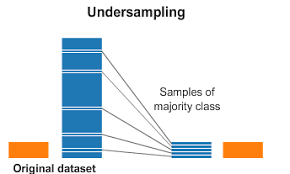Unbalanced Sequential Data in Machine Learning
Original price was: $999.00.$49.00Current price is: $49.00.
This Course is available for download now. You can contact us for Screenshots or Demo. Access for this course will be sent on google drive. Join our telegram channel to see updates and occasional discounts. If you want to pay through Paypal or Card contact us – On Telegram Click Here or contact on Mail – [email protected]
Description
Unbalanced Sequential Data in Machine Learning
MP4 | Video: AVC 1280×720 | Audio: AAC 44KHz 2ch | Duration: 1 Hour | 204 MB
Learn about unbalanced sequential data in machine learning. Topics to be covered include:
About sequential data.
Sequential vs. IID data. We cover the difference between standard IID data and sequential data. We also describe how to mathematically formulate these two data types. For IID data there is only one possible mathematical formulation and for sequential data there are two mathematical formulations.
Modeling approaches.
We introduce two main neural nets (RNNs and LSTMs)
and explain why these two models are a good fit for sequential data. We conclude with an explanation of gradient boosting and its advantages over other existing methods.
Recurrent Neural Networks.We describe the key components of our proposed approach for solving unbalanced sequential data. We describe RNN (Recurrent Neural Networks) and the reasons for having shared weights in RNN, followed by the training of RNNs using BPTT. We conclude with RNN use cases including machine translation, image captioning, video classification, speech recognition, time series prediction, and text generation.
Long Short Term Memory. We discuss LSTM (Long Short Term Memory), its structure, and the gradient boosting enseMB le technique.
We cover the learning process of gradient boosting
in detail including an algorithm for binary classification.
Gradient boosting. We explain Gradient Boosting for regression problems and how to apply gradient boosting for the binary classification problem.
Keras and data sets. Learn the experimental settings which include Keras and its most commonly used layers including Dense and LSTM. We also cover the nature of datasets and their distribution. We conclude with a description of the network architecture along with the benefits of using the EMB edding Layer instead of using OHE (One hot encoding technique).
Performance metrics.Master practical tips for training neural nets, Main Descriptions (AUC) curves of each dataset, Train-Test loss curves of boosting, and other performance metrics such as precision, recall, and fscore on an actual data set.




